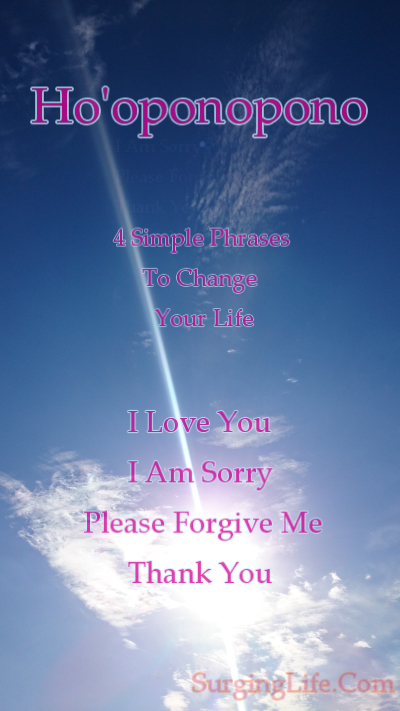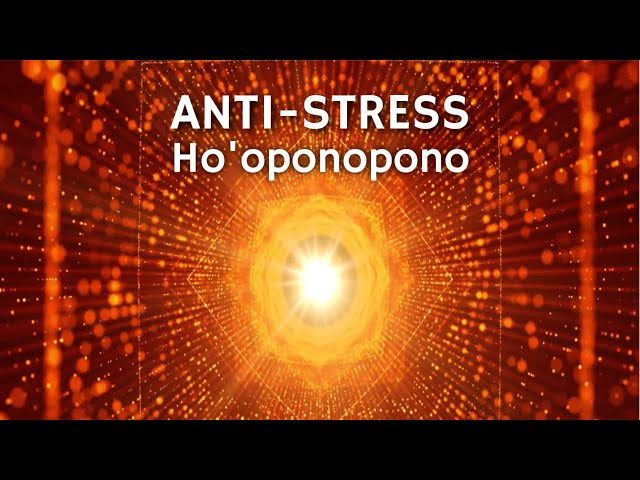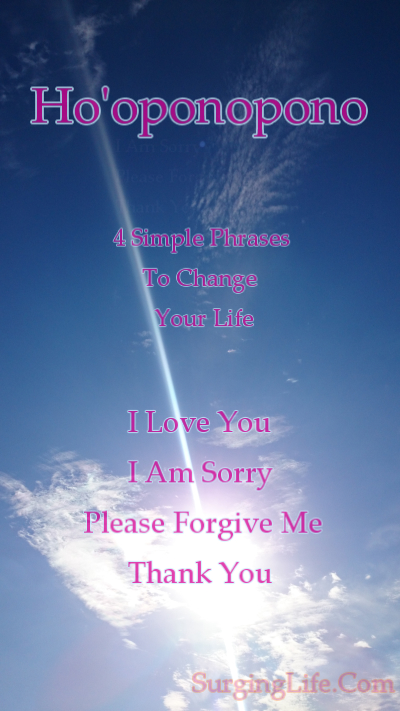In this article, we will explore how Ho’oponopono can be a powerful tool to manage stress in your life. You will learn about the origins and principles of this ancient Hawaiian practice, as well as the different techniques involved. We will discuss how Ho’oponopono can help you release negative emotions, improve your relationships, and bring about inner peace. By the end of this article, you will have a better understanding of how Ho’oponopono can benefit your overall well-being and provide you with effective ways to cope with stress.

Understanding Ho’oponopono
Ho’oponopono is an ancient Hawaiian healing practice that focuses on reconciliation and forgiveness. The word “Ho’oponopono” translates to “to make right” or “to make correct.” It is rooted in the belief that every individual is responsible for their own experiences and that healing can be achieved through taking responsibility for one’s thoughts, actions, and emotions.
Origins and meaning of Ho’oponopono
Ho’oponopono has its origins in the traditional practices of the Hawaiian culture. It was traditionally used as a form of conflict resolution within families or communities. The goal of Ho’oponopono was to restore harmony and balance by addressing and resolving any issues or conflicts between individuals.
The practice involves coming together as a group, facilitated by a Kahuna (a Hawaiian spiritual teacher), to openly share and resolve any grievances or misunderstandings. It also emphasizes the importance of forgiveness and accepting personal responsibility for one’s role in any conflicts or negative situations.
Principles and beliefs of Ho’oponopono
Ho’oponopono is based on several core principles and beliefs. Firstly, it recognizes that everything in the world is connected, and that our thoughts and actions have a direct impact on our own lives and the world around us. Secondly, it emphasizes that each individual has control over their own experiences, and that taking responsibility for their own thoughts and emotions is essential for healing and personal growth.
Ho’oponopono also holds the belief that forgiveness is a powerful tool for healing and restoring balance. By forgiving ourselves and others, we are able to release negative emotions and create space for positivity and healing to occur. Additionally, the practice encourages self-reflection and self-improvement, as individuals are encouraged to examine their own thoughts, actions, and beliefs in order to bring about positive change.
Connection between Ho’oponopono and Stress
Understanding the impact of stress on mental and physical health
Stress has become an increasingly prevalent issue in our modern society. The demands of daily life, work pressures, and personal responsibilities can all contribute to high levels of stress. When left unmanaged, stress can have detrimental effects on both our mental and physical health.
Chronic stress can lead to a variety of health problems, including anxiety, depression, high blood pressure, heart disease, and a weakened immune system. It can also negatively impact our relationships, productivity, and overall well-being. It is therefore essential to find effective stress management techniques to mitigate the harmful effects of stress.
Introduction to Ho’oponopono as a stress management technique
Ho’oponopono offers a unique approach to stress management by addressing the underlying causes of stress and promoting emotional healing. Instead of simply treating the symptoms of stress, it encourages individuals to take responsibility for their own experiences and to actively work towards resolving any emotional conflicts or negative thoughts.
By practicing Ho’oponopono, individuals are able to release negative emotions and heal the wounds that contribute to stress. This, in turn, helps to restore balance and harmony within oneself and with others.
Ho’oponopono Techniques for Stress Relief
Mental and emotional cleaning with Ho’oponopono
One of the fundamental techniques in Ho’oponopono is known as “mental and emotional cleaning.” This involves taking responsibility for one’s thoughts and emotions and actively working towards their transformation.
To practice mental and emotional cleaning, you can start by acknowledging and accepting any negative emotions or stressful thoughts that arise. Instead of suppressing or avoiding them, allow yourself to fully experience them. Then, with intention and sincerity, say the four Ho’oponopono phrases: “I’m sorry, please forgive me, thank you, I love you.”
These phrases serve as a mantra to release negative energy and promote healing. By repeating them, you are acknowledging your role in creating and experiencing the stress and seeking forgiveness from yourself and others involved.
Practical exercises for stress management through Ho’oponopono
In addition to mental and emotional cleaning, there are several practical exercises that can help manage stress through Ho’oponopono. One such exercise is gratitude journaling. Each day, take a few moments to write down things you are grateful for. This practice helps to shift your focus to the positive aspects of life and cultivates a sense of appreciation and well-being.
Another exercise is visualizing yourself in a peaceful and stress-free state. Close your eyes, take deep breaths, and imagine yourself in a serene environment. Visualize the stress leaving your body and being replaced by calm and tranquility. This visualization technique can be used whenever you feel overwhelmed or stressed.
Ho’oponopono meditation and visualization techniques
Meditation is another powerful tool in Ho’oponopono for stress relief. Find a quiet and comfortable space where you can sit or lie down. Close your eyes and focus on your breath, allowing your body to relax. As you breathe in, imagine inhaling positive energy, and as you exhale, imagine releasing stress and negativity.
You can also incorporate visualization into your meditation practice. Picture yourself surrounded by healing light or envision a peaceful scene that brings you joy. Allow yourself to fully immerse in these positive feelings and let go of any stress or tension you may be holding onto.
The Healing Power of Forgiveness
The role of forgiveness in Ho’oponopono
Forgiveness is a fundamental aspect of Ho’oponopono. It plays a significant role in healing emotional wounds, resolving conflicts, and reducing stress.
In Ho’oponopono, forgiveness is seen as a way to release negative emotions and free oneself from the burdens of the past. By forgiving ourselves and others, we let go of resentment, anger, and hurt, creating space for healing and peace.
How forgiveness can alleviate stress and promote well-being
Forgiveness has been shown to have numerous benefits for our mental and physical health. When we hold onto grudges or negative emotions, it can create chronic stress and contribute to the development of various health problems.
By practicing forgiveness, we are able to let go of these negative emotions and reduce stress levels. This, in turn, can lead to improved mental health, reduced anxiety and depression, enhanced immune function, and better overall well-being.
Guided forgiveness practices in Ho’oponopono
Ho’oponopono offers several guided forgiveness practices that can help individuals release negative emotions and promote healing. One such practice is the “letter of forgiveness.” In this exercise, you write a letter to someone you need to forgive or to yourself. Express your feelings honestly and openly, and then either send the letter or simply read it aloud to yourself as a form of release.
Another practice is the “ho’oponopono meditation for forgiveness.” Find a quiet space and focus on your breathing. As you inhale, visualize forgiveness flowing into your body, and as you exhale, imagine releasing any negative emotions or grudges. Repeat the four Ho’oponopono phrases, “I’m sorry, please forgive me, thank you, I love you,” as you continue to breathe deeply.

Self-Responsibility and Self-Reflection
Taking responsibility for one’s thoughts, actions, and emotions
Ho’oponopono emphasizes the importance of self-responsibility in healing and stress management. By accepting that we have control over our own experiences, we are empowered to make positive changes in our lives.
Taking responsibility for our thoughts, actions, and emotions requires self-reflection and self-awareness. It involves examining our beliefs, attitudes, and behaviors in order to identify any patterns or habits that may be contributing to stress. Once we are aware of these patterns, we can consciously choose to change them and cultivate more positive and peaceful ways of being.
Ho’oponopono as a tool for self-reflection and self-improvement
Ho’oponopono provides a framework for self-reflection and self-improvement. Through the practice of mental and emotional cleaning, forgiveness, and gratitude, individuals are able to gain insight into their own emotions and thought processes.
By regularly engaging in these practices, we become more aware of our emotional triggers and can work towards transforming negative thought patterns into positive ones. This process of self-reflection and self-improvement not only helps in stress management but also promotes personal growth and emotional well-being.
Cultivating Peace and Harmony
Embracing inner peace through Ho’oponopono
One of the main goals of Ho’oponopono is to cultivate inner peace and harmony. By taking responsibility for our own thoughts and emotions, practicing forgiveness, and engaging in self-reflection, we create an internal environment of peace and tranquility.
When we are at peace with ourselves, we are better equipped to handle external stressors and challenges. We are able to respond to situations with clarity and compassion, rather than reacting from a place of anger or anxiety. Cultivating inner peace through Ho’oponopono allows us to navigate stressful situations with grace and resilience.
Creating harmonious relationships and environments
Ho’oponopono not only fosters inner peace but also promotes harmonious relationships and environments. By practicing forgiveness and taking responsibility for our own experiences, we are able to resolve conflicts and create a sense of unity and understanding with others.
When we let go of resentment and grudges, we open ourselves up to deeper connections and meaningful relationships. By applying Ho’oponopono principles in our interactions with others, we can create a positive and supportive environment that enhances our overall well-being.
Applying Ho’oponopono in daily life for stress reduction
Ho’oponopono is not just a practice to be done in times of stress or conflict. It is a way of life that can be applied in daily interactions and experiences. By integrating Ho’oponopono principles into our daily routines, we can reduce stress and promote overall well-being.
Some practical ways to apply Ho’oponopono in daily life include pausing and taking a deep breath before responding to a stressful situation, practicing gratitude for the little things in life, and actively seeking forgiveness and forgiveness from oneself and others. These small but powerful practices can have a significant impact on our stress levels and overall happiness.

Scientific Evidence and Case Studies
Research on the effectiveness of Ho’oponopono in stress management
While Ho’oponopono is rooted in ancient wisdom, it has also garnered interest from scientific researchers. Studies have explored the effectiveness of Ho’oponopono in stress management and overall well-being.
Research has shown that practices such as forgiveness and gratitude, which are integral to Ho’oponopono, have positive effects on mental health and stress reduction. For example, a study published in the Journal of Happiness Studies found that cultivating gratitude through daily journaling led to significant improvements in well-being and overall life satisfaction.
Real-life examples and testimonials of Ho’oponopono’s impact on stress
Beyond scientific research, there are numerous real-life examples and testimonials that highlight the positive impact of Ho’oponopono on stress management. Many individuals have reported feeling a sense of peace, clarity, and emotional release after practicing Ho’oponopono.
Stories of individuals using Ho’oponopono to heal relationships, resolve conflicts, and reduce stress are widely shared. These personal accounts serve as a testament to the transformative power of Ho’oponopono in navigating stressful situations and promoting overall well-being.
Integration and Support
Incorporating Ho’oponopono into existing stress management practices
Ho’oponopono can be integrated into existing stress management practices to enhance their effectiveness. Whether you already practice meditation, yoga, or other stress reduction techniques, incorporating Ho’oponopono principles can deepen your healing journey.
By combining mindfulness, forgiveness, and self-reflection with other stress management techniques, you can create a comprehensive and holistic approach to managing stress and promoting well-being.
Seeking guidance from Ho’oponopono practitioners and experts
If you are new to Ho’oponopono or would like further guidance, seeking the support of Ho’oponopono practitioners and experts can be beneficial. They can provide additional insights, techniques, and personalized guidance to help you navigate your own stress management journey.
Whether through workshops, online courses, or one-on-one sessions, these experts can help tailor the practice of Ho’oponopono to your specific needs and goals.

Potential Challenges and Limitations
Addressing skepticism and misconceptions about Ho’oponopono
As with any healing practice, Ho’oponopono may be met with skepticism or misconceptions. Some individuals may view it as a simple affirmation practice or dismiss it as a New Age trend. It is important to approach Ho’oponopono with an open mind and willingness to explore its deeper principles and teachings.
While the effectiveness of Ho’oponopono may vary from person to person, it is essential to approach it with sincerity and a genuine desire for healing and personal growth. By embracing the principles and techniques of Ho’oponopono, you can unlock its potential to alleviate stress and promote well-being.
Understanding the limitations of Ho’oponopono in dealing with complex stress factors
While Ho’oponopono can be a powerful tool for managing stress, it is important to acknowledge its limitations, especially when dealing with complex stress factors. Ho’oponopono may not provide a solution to external stressors or traumatic events that require additional professional support.
It is crucial to seek appropriate help and guidance when dealing with complex stress factors that extend beyond the scope of personal healing practices. Ho’oponopono can complement other stress management techniques and support your overall well-being, but it is important to recognize when additional assistance may be necessary.
Conclusion
In conclusion, Ho’oponopono is a profound practice that offers a unique approach to stress management. By taking responsibility for our own experiences, practicing forgiveness, and cultivating inner peace, we can effectively navigate stressful situations and promote overall well-being.
Ho’oponopono provides practical techniques such as mental and emotional cleaning, gratitude journaling, and meditation to support stress relief. The healing power of forgiveness and self-reflection are also essential components of Ho’oponopono that contribute to a more harmonious and peaceful life.
While Ho’oponopono has its roots in ancient Hawaiian traditions, it has gained recognition and interest in scientific research and personal testimonies. Integrating Ho’oponopono into existing stress management practices and seeking guidance from experts can further enhance its effectiveness.
By embracing the principles of Ho’oponopono and applying them in daily life, you can experience a profound transformation in how you deal with stress and cultivate a greater sense of peace and harmony.

